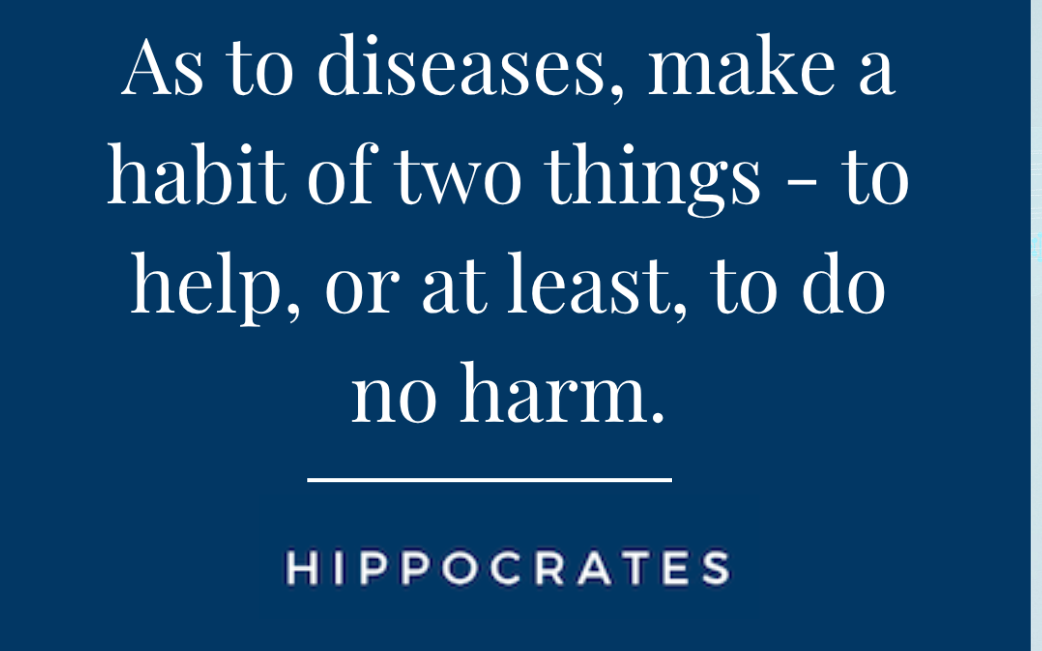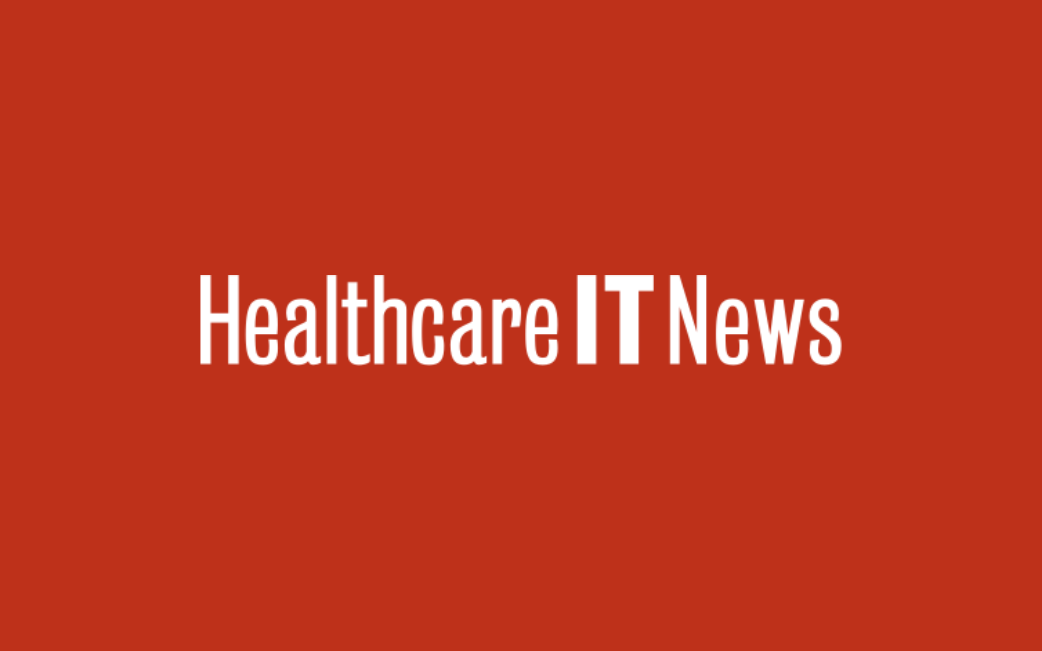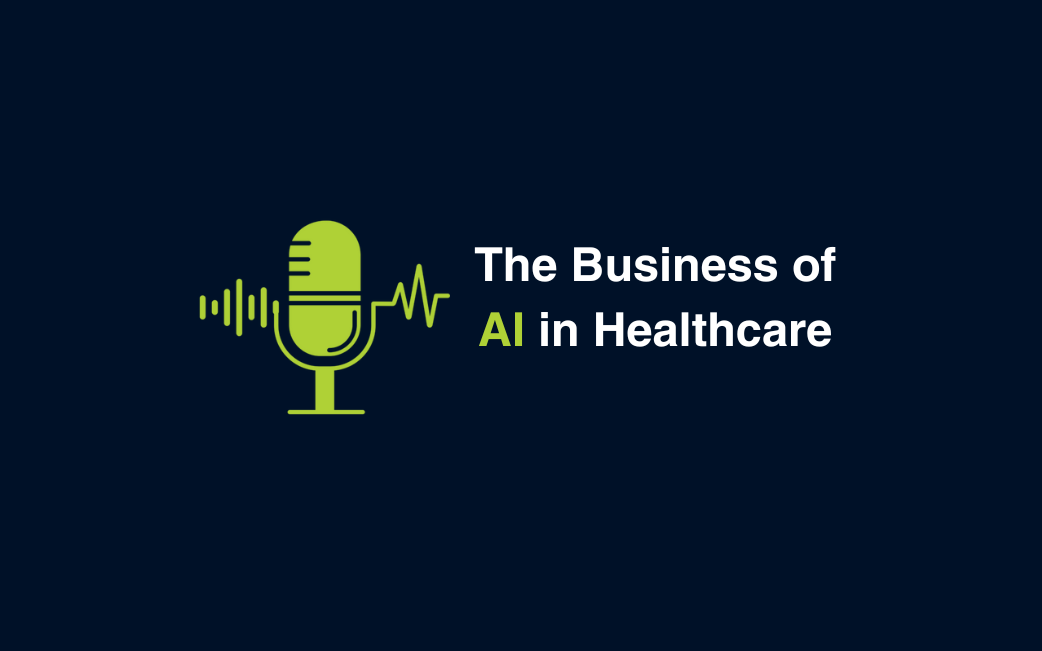In a recent piece from Psychology Today, tardive dyskinesia (TD) is brought into sharper public awareness as both a prevalent and often underdiagnosed condition linked to antipsychotic use. The article explores the need for more consistent screening practices and highlights how AI-powered tools, like Videra Health’s TDScreen, are improving early detection and access to care. It also stresses the physical, emotional, and social burden TD places on individuals, and how timely intervention can significantly reduce its impact. With advanced screening technology and FDA-approved treatments, the future of TD care is shifting from reactive to proactive. Read the full article here.
Bridging Domains: The Untapped Potential of AI-Driven Assessment
In a compelling piece from TechBuzz News, Videra Health’s Brett Talbot explores how AI-driven assessment—originally designed for behavioral health—is unlocking new possibilities in the detection and monitoring of movement disorders. The article highlights how shared challenges across disciplines, like episodic data gaps and subjective ratings, can be addressed by AI’s continuous, multimodal analysis. This convergence signals a future where digital biomarkers create more precise, scalable, and patient-centered tools across the healthcare spectrum. As AI continues to bridge domains, it holds the potential to dramatically reshape both clinical practice and pharmaceutical innovation. Read the full article here.
Navigating the APA’s AI Ethical Guidance
How AI Expands Care When Care Demands Continues to Rise
Discovery Behavioral Health boosts care and revenue with patient engagement efforts
Healthcare IT News highlights how Discovery Behavioral Health is advancing patient care and operational efficiency through post-discharge engagement powered by AI. By implementing a white-labeled version of Videra Health’s video-based assessment platform, Discovery extended support beyond the walls of its facilities—gaining real-time insights into patient recovery and unlocking new opportunities for early intervention and re-engagement. This proactive, tech-enabled approach exemplifies the shift toward continuous, personalized care across the behavioral health spectrum. With measurable improvements in patient outcomes and provider efficiency, the article shows how innovation can meaningfully transform the recovery journey.
Read the full article here.
Combating Maternal Depression: Providing More Care Options for New Mothers with AI
How AI-Driven Innovation is Transforming Tardive Dyskinesia Detection and Patient Care
AI’s Role in Behavioral Health and Ethical Patient Care with Loren Larsen
How can AI deepen behavioral health care without crossing ethical lines? Loren Larsen, CEO of Videra Health, reveals how AI-driven conversations, facial analysis, and patient follow-ups are reshaping mental health treatment—and why model cards are crucial for transparency. Tune in to The Business of AI in Healthcare podcast to explore the fine line between innovation and patient trust. Listen to the full episode here.
Ethical Implementation of AI in Mental Healthcare: A Practical Guide
In a recent article published by The AI Journal, the conversation around AI in mental healthcare takes an essential turn—focusing not only on its transformative potential, but on how to implement these tools responsibly. As clinicians adopt AI to improve efficiency and outcomes, ethical principles like transparency, equity, and patient autonomy must remain central to the process. This guide emphasizes that ethical implementation isn’t a one-time decision, but a continuous journey that requires trusted partners and thoughtful oversight. Ultimately, AI should enhance—not replace—the deeply human nature of mental healthcare.
Read the full article here.
5 Ways AI Can Help Mental Health Clinicians Manage a Growing Caseload
As mental health providers face mounting caseloads and rising demand, AI offers a path forward by enhancing efficiency without sacrificing personalized care. This article highlights how AI-powered screening platforms, rooted in measurement-based care, are helping clinicians prioritize high-risk patients, automate routine tasks, and extend their reach beyond the office. The result is more time for meaningful client interactions and stronger therapeutic relationships—hallmarks of quality care. With the right implementation, AI serves not as a replacement, but as a trusted partner in the delivery of smarter, more responsive mental health services.
Read the full article here.
AI in Clinical Trials: Moving Beyond Traditional Endpoints in Bipolar Disorder Research
How AI is Empowering Providers with Early Detection of Mental Illness
AI is transforming mental health care by enabling earlier, more precise detection of symptoms that might otherwise go unnoticed until crisis points. This thoughtful piece explores how technology can continuously monitor subtle behavioral shifts—augmenting clinical expertise and allowing providers to intervene sooner. By analyzing data across multiple modalities and comparing patients to their own baselines, AI supports a shift from reactive treatment to proactive care. The result is better outcomes, lower costs, and a future where clinicians are empowered—not replaced—by intelligent tools.
Read the full article here.
Breaking Down Barriers: How CCBHCs Can Lead Healthcare Access Innovation
Transforming Clinical Trials: The Power of Multi-Modal AI Assessment
Exploring Future Trends & Their Impacts
In this episode of the Strategy& Insider Podcast, Loren Larsen, CEO of Videra Health, discusses the transformative role of AI in mental healthcare. Discover how his platform uses video, audio, and chat interactions to revolutionize mental health assessments, enhance patient outcomes, and support clinicians. Listen to the full episode here.
2025 Trends in Behavioral Health Technology – Part 2
2025 Trends in Behavioral Health Technology, Part 1
Filling the Mental Health Services Gaps With Technology
On episode 118 of PSQH: The Podcast, Loren Larsen, CEO and co-founder of Videra Health, talks about how technology can help fill the gaps in mental health services. Listen to the full episode here.
Meet The Disruptors: Loren Larsen Of Videra Health On The Five Things You Need To Shake Up Your Industry
Loren Larsen, CEO of Videra Health, shares his perspective on what it takes to truly disrupt an industry in this thoughtful Authority Magazine interview. Drawing on decades of experience in healthcare technology and AI, Larsen reflects on the challenges of innovating in a highly regulated, human-centered field like mental health. He discusses how Videra Health is leveraging video-based AI to enhance early detection and support clinicians without replacing the essential human connection. Throughout the piece, he emphasizes the importance of trust, empathy, and deep domain expertise in building solutions that actually move the needle.
Read the full article here.
Empowering Decisions: How AI Data Insights Are Shaping TD Treatment Approaches
Tardive dyskinesia (TD) is a serious movement disorder affecting individuals taking antipsychotic medications for extended periods. It’s characterized by involuntary, repetitive movements of the face, tongue, or limbs. Early detection and intervention are crucial for managing TD and improving patient well-being. However, traditional methods of identifying TD risk often rely on subjective observations and patient reporting, leading to missed diagnoses and delayed treatment.
Here’s why this is a growing concern: Antipsychotics are widely prescribed, with an estimated 1.2% of the US population taking them. This translates to a potential prevalence of TD between 800,000 and 1.6 million individuals. Disturbingly, estimates suggest only around 5% of these individuals receive treatment for TD symptoms, despite the availability of medications like Austedo and Ingrezza.
The challenge lies in early detection. Traditional methods are often insufficient, and devoting enough in-person time for frequent monitoring can be difficult for busy mental health professionals. This is especially true with the rise of telemedicine and increasing patient loads. As a result, TD often goes undetected until later stages, when the involuntary movements may become permanent.
This is where Artificial Intelligence (AI) is revolutionizing the field of tardive dyskinesia management. AI-driven mental health screening platforms offer a powerful tool to empower healthcare professionals with data-driven insights, leading to more proactive and effective TD treatment approaches.
How AI Platforms Identify TD Risk:
AI-powered screening platforms go beyond traditional methods by analyzing a wider range of data points to create a more comprehensive picture of a patient’s TD risk. Machine learning algorithms sift through vast amounts of historical data, identifying patterns and correlations between specific factors and the development of TD. This allows the platform to generate individualized risk profiles for each patient.
Videra Health utilizes video assessments, where AI can detect subtle movement patterns that may be difficult for even experienced psychiatrists to identify without extensive testing. This is especially beneficial in identifying early symptoms of TD, which could result in earlier intervention and ultimately, better patient outcomes.
It’s important to note that while there’s no known cure for TD, early detection allows for treatment approaches that can manage symptoms and potentially prevent them from worsening. Medications like Austedo and Ingrezza can help alleviate some symptoms, and early intervention can significantly improve a patient’s quality of life. Additionally, failing to properly screen for TD can lead to liability issues for healthcare providers, as patients with undetected TD may experience significant physical and emotional distress.
Benefits of AI-Driven TD Risk Assessment:
By leveraging AI data insights, healthcare professionals can enjoy several advantages:
- Proactive Identification: Early detection is key to managing TD. AI platforms can identify potential risk factors as symptoms begin to manifest, allowing for preventative measures and early intervention.
- Data-Driven Decision Making: AI provides objective, data-driven insights to support clinical judgment. This empowers healthcare professionals to make more informed decisions about treatment plans and medication adjustments.
- Personalized Care: AI risk profiles enable a more personalized approach to TD care. By understanding each patient’s unique risk factors, healthcare professionals can tailor treatment plans to maximize effectiveness and minimize side effects.
- Improved Patient Outcomes: Early detection and intervention can significantly improve patient outcomes. By proactively managing TD risk, healthcare professionals can help patients maintain their quality of life and well-being.
Empowering Patients with AI Tools:
Beyond empowering healthcare professionals, AI can also empower patients in their own healthcare journey. AI-powered platforms can:
- Increase Patient Engagement: When patients feel their concerns are addressed proactively, it fosters trust and collaboration with their healthcare providers.
- Self-Assessment Tools: Some platforms offer self-assessment tools that allow patients to track potential symptoms and report them to their healthcare provider. This fosters a collaborative approach to managing TD risk.
The Future of AI in TD Management:
As AI technology continues to evolve, we can expect even greater advancements in the field of TD treatment. Here are some exciting possibilities:
- Real-Time Monitoring: AI-powered wearable devices might continuously monitor patients for subtle changes in movement patterns, allowing for real-time TD risk assessment.
- Additional Predictive Analytics: In addition to the existing AI-powered screening tools, advanced algorithms might predict the likelihood of TD development based on a patient’s specific medical history and genetic makeup, enabling even more proactive approaches.
AI-driven mental health screening platforms are transforming the landscape of TD management. By empowering healthcare professionals with data-driven insights and fostering patient engagement, AI offers the potential for earlier detection, personalized treatment plans, and improved patient outcomes in the fight against tardive dyskinesia. As AI technology continues to develop, the future of TD management holds great promise for improving patient well-being.
The Power of Listening: How AI Assessments Capture the Patient Voice and Transform Care Management
Traditionally, care management relies heavily on questionnaires and standardized assessments. While these tools provide valuable information, they often miss the richness of the patient experience, especially in mental health. Subtle cues in a patient’s voice, facial expressions, and body language can offer deeper insights into their well-being, which can be missed by traditional methods.
The Power of AI in Capturing the Patient Voice and Monitoring Progress
Mental Health Screening and Beyond: As a healthcare professional, I’ve often heard the sentiment: “If I could just see the patient for a few seconds, I’d get a much better sense of how they’re doing.” Traditional methods can lack nuance, relying solely on self-reported information.
This is where AI-powered video, text, and audio assessments excel. Mental health screening platforms leverage AI to capture the patient in ways that go beyond what traditional methods can achieve, providing a more accurate picture of a patient’s well-being. But the power of AI extends past the initial screening.
These assessments can be used for ongoing monitoring throughout a patient’s care journey. Patients can share their experiences in their own words, from the comfort of their own environment, during regular check-ins or engage using an AI-powered virtual support agent. These tools eliminate potential bias or apprehension that might arise in face-to-face interactions and provide a wealth of data for ongoing monitoring.
According to a recent study conducted by Videra Health with Serious Mental Illness (SMI) patients, 90% of those surveyed expressed a desire to use the Videra Health app/platform on a monthly basis for monitoring their mental health condition. This high percentage was consistent across all levels of depression severity. Additionally, 95% of the patients reported having a positive experience while using the platform.
Furthermore, in the same study, 32 providers were also surveyed about their willingness to use an app/platform for monitoring their patients’ mental health. An overwhelming 92% expressed interest in learning about the severity of their patients’ symptoms through the platform, while 96% liked the convenience, timeliness, and access to screening that it provided.
In essence, AI can act as your virtual eyes and ears, offering those crucial “20 seconds” to gauge a patient’s emotional state and overall well-being. This empowers you to intervene early, personalize treatment plans, and ultimately deliver better care to your patients.
Transforming Care Management with Continuous Monitoring
By capturing the patient voice and analyzing these nonverbal cues during ongoing check-ins, AI assessments offer significant benefits for care management across all healthcare organizations, including behavioral health centers:
- Improved Patient Engagement and Adherence: The ability to share their experiences in their own words empowers patients and fosters a more collaborative relationship with their care team and build trusts. Regular check-ins using AI can also help with adherence to treatment plans.
- Early Detection of Changes and Relapses: By analyzing subtle variations in speech, facial expressions, and body language during monitoring, AI can help identify potential changes in a patient’s condition or signs of relapse at an earlier stage, allowing for timely intervention and improved patient outcomes.
- Empowering Providers to Deliver More Effective Care: The rich data gathered by AI assessments provides care managers with a more comprehensive understanding of a patient’s condition and progress over time. This empowers them to personalize treatment plans, adjust interventions as needed, and ultimately deliver more effective care to more patients.
AI Analyzes the Nuances for a Holistic View
AI technology goes beyond simply capturing words; it analyzes the subtle nuances of communication, including:
- Facial expressions: Tiny changes in facial expressions, like micro-expressions of sadness or anxiety, can be detected by AI and provide valuable insights into a patient’s emotional state.
- Speech patterns: AI can analyze speech patterns for changes in tone, pitch, or fluency, which can be indicators of depression, anxiety, or other mental health concerns.
- Body language: Crossed arms, fidgeting, or lack of eye contact can all be indicators of a patient’s emotional state. AI can detect these subtle cues and provide valuable insights to care managers.
AI Integration for Seamless Monitoring:
AI technology seamlessly integrates with existing care management workflows. For instance, consider chronically ill or at-risk patients who participate in regular care management calls. AI-powered video and voice technology can be implemented alongside these calls, offering a deeper understanding of the patient’s mental health beyond simply discussing physical symptoms. This empowers care teams to provide more comprehensive support and improve overall patient well-being throughout the care journey, not just during initial screenings.
AI assessments represent a significant leap forward in patient care management. By capturing the patient voice and analyzing subtle cues during ongoing monitoring, this technology empowers healthcare organizations to deliver more effective, personalized, and efficient care. As AI continues to evolve, we can expect even greater advancements in the field of patient-centered care.
If you would like to see one of Videra Health’s services in action, please visit TDScreen.ai and sign up to take a free virtual screening.


















